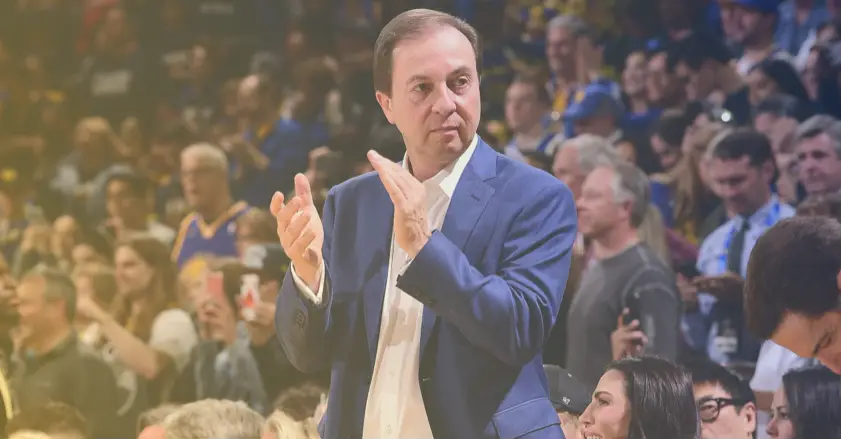There’s a certain vibe that some sports teams give off, that leads them to be reflective of the communities that support them and the businesses that own and run them. It’s not always a perfect link, and it may not be there for every team, but it’s there. Along these lines, the Golden State Warriors, and especially the Golden State Warriors of the 2010s, during the Stephen Curry / Joe Lacob era, embody the tech industry that has, since the 1990s, become a dominant economic force in the Bay Area. I mean this in both good ways and in bad ways.
The On-court “Innovation”
People talk about the Warriors as a team that “changed the game”. They look to Stephen Curry giving players license to attempt 10+ 3-pointers a game or to Draymond Green running traditional centers off the court. They say that these are incredible developments, and they certainly have been effective. However, the 2015-on Warriors were not the first to do these things, nor were they even the first Warriors team to do so. There are legacies of teams like the Mike D’Antoni/Steve Nash/Amare Stoudemire Suns in those Warriors, legacies of the beautiful game Spurs, even legacies of earlier Warriors teams (notably the run and gun style of the early 90s run TMC squad and the small ball style of the 07 We Believe team). But teams learn from each other and adapt all the time, this is nothing noteworthy.
What is noteworthy is how much of the narrative around those Warriors was that they sprung, fully-formed, from the ether. It’s much like we see whenever a new start-up announces that they’ve built a new vehicle that can carry a large number of people all at once along an established route for a small fee. It’s a bus, they’ve built a bus. Tech companies also have a strong tendency to avoid acknowledging their intellectual predecessors (especially in cases where those intellectual predecessors may have been publicly funded)
The Hubris
Joe Lacob is a venture capitalist, and a largely successful one. You don’t buy an NBA team without that kind of success. That attitude, however, has shown up in both his and the franchise’s statements and actions. The most obvious of these is the famous “light-years ahead” comment. However, the same attitude has shown up in a number of recent draft choices by the franchise as well. In Venture Capital, you can make 50 bets and have 49 of them totally crash and burn as long as one of them pays off enough to cover the rest of your losses (which, with tech “unicorn” companies, is often the case). We see the same attitude when people assume that because they are clever, or competent, in one field of human endeavor that they will be similarly clever in another.
This is the same attitude we saw in early 2020, where some economists or tech venture-capitalists decided they understood disease outbreaks better than epidemiologists. And we see it with the Warriors as well, nowhere more clearly than in the case of one Alen Smailagic. Smailagic was a player the Warriors decided to be too clever by half about, trying to hide him with their G-league team then burning multiple second-rounders to get him in the draft, only for him to bounce around between being mediocre in the G League and not playing with the main team.
All of this because Kirk Lacob, the owner’s son and far from a brilliant basketball mind, was convinced that he’d scouted the next Nikola Jokic or Kristaps Porzingis, when in fact he hadn’t even scouted Dragan Bender. We can see this in other moves the team makes, especially around draft picks; a tendency to make higher-upside swings rather than more reliable players. In 2021 it seems to be working out in the case of Jonathan Kuminga but is less certain in the case of James Wiseman, the team’s other recent super high upside play.
Is there a “there” there?
One of my favorite stories about Oakland, where I grew up, no longer live, and miss deeply, concerns the author Gertrude Stein. After traveling for a time, and returning to see much of her family’s farm had been developed, she reportedly said “There’s no ‘there’ there”. The quotation has been commemorated in a sculpture between Oakland and neighboring Berkeley: the words “Here” and “There” in letters the height of a person. The tech industry has had a similar impact on the city. On the one hand, it’s brought in a lot of money. But on the other hand, it’s brought in a lot of money.
A community of diverse, passionate, weird-ass people have been priced out of town by high rents, and many of the community staples I grew up near have been unable to stay in business in the face of gentrification. In the same way, one of the most passionate and knowledgeable fanbases in the NBA were first priced out of Oracle Arena once the Warriors became good and started attracting more attention from the tech industry. Then the Warriors completed the process by leaving for San Francisco for a much more sterile, corporate (though admittedly beautiful) arena. A city with a long history of fanatical support for the Warriors, Raiders, and A’s is down to just the last of those three, and even that is tenuous at best.

